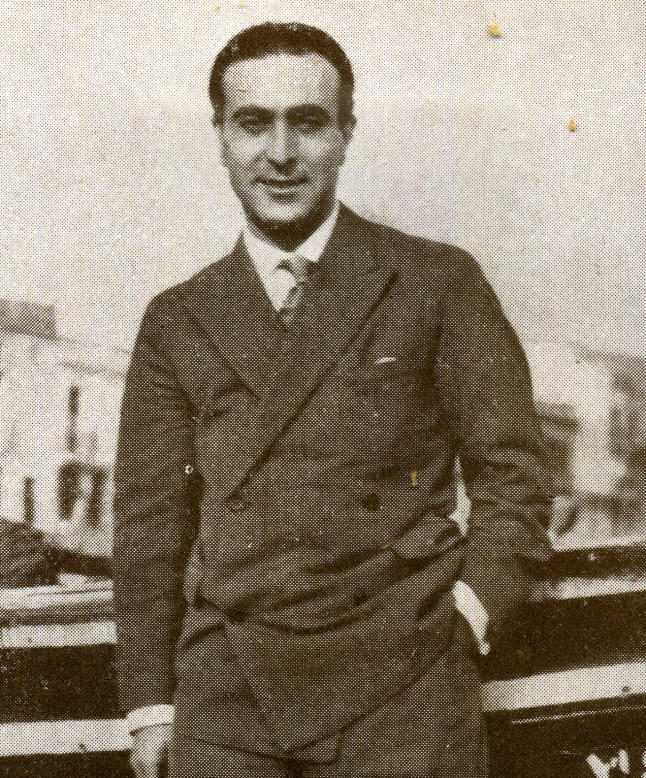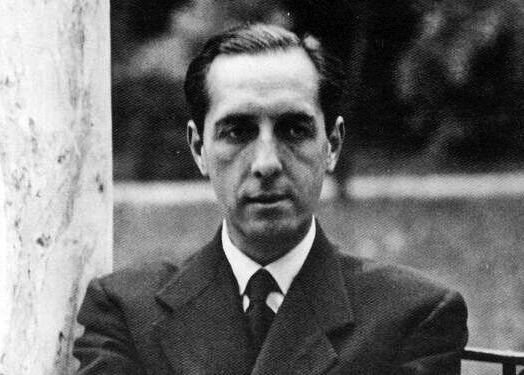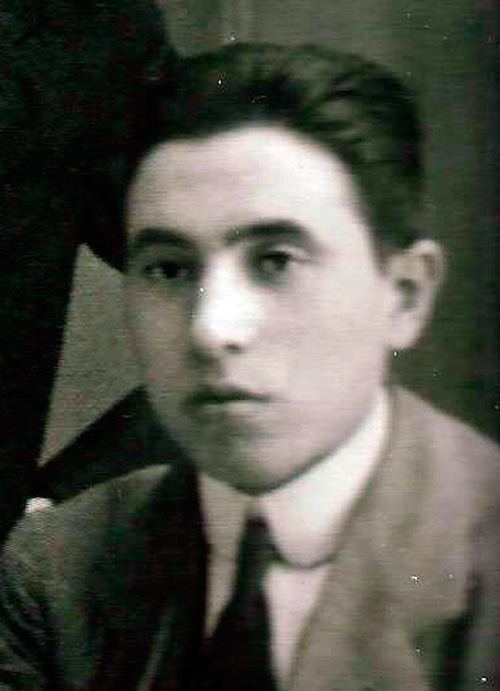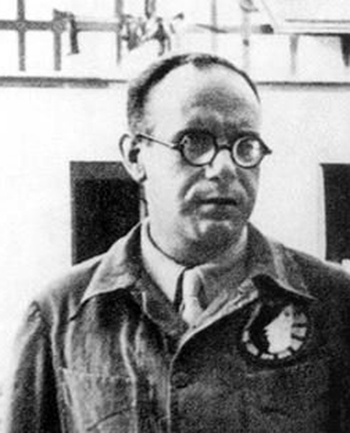Journalist, poet, storyteller and essayist of the Generation of ’27, friend and fellow writer of Federico García Lorca.
He was born in Denia in 1900. He went to high school at the Alliance Française and studied Philosophy and Letters and Law in Madrid. He attended the classes of Emilia Pardo-Bazán, Manuel García Morente, Ortega y Gasset and Menéndez Pidal, among others. He soon began his friendship with Xavier Zubiri, Francisco Bores, Ernesto Giménez Caballero, Gerardo Diego and Dámaso Alonso. Between 1919 and 1922, he began to publish poetry in the magazines of the time, some avant-garde, such as Ultra or Horizonte. In 1921, he published Mirrors, his first book of poems. After finishing his university studies he participates in the activities of the Center of Historical Studies and devotes some time to teaching. In 1924, thanks to the Committee for Extension of Studies, he travels to Italy, to the University of Genoa. He wrote Port of Shadows and some chronicles on culture and politics for La Libertad of Madrid and the Occidente magazine which caused him to be expelled from the country in 1926.
In 1934, he interviews Federico García Lorca at the Residencia de Estudiantes, who spends a few days in Madrid after a tour with La Barraca. Federico tells him about the successes obtained with the company and the exceptional criticisms made by Jean Prévost or Ezio Levi.
On his return to Spain he publishes Italy Fascist and translates several Italian authors’ works. He joined the circle of the Residencia de Estudiantes (Students’ Residence) where he met Buñuel, Dalí and Lorca. In 1924, a special issue of the magazine Intentions (directed by Valery Larbaud) on young Spanish literature appeared in Paris. In addition to a text by Federico García Lorca, it contained contributions by Dámaso Alonso, José Bergamín, Guillén, Gerardo Diego and Juan Chabás, among others, which makes us think that by this time the group that later made up the Generation of ’27 had already formed. He also attended the tribute to Góngora, held in Seville in 1927 and which in the end was the constitutional act of the Generation of ’27, where he spoke about the Spanish narrative of the time. He was one of the seven writers who, with Ignacio Sánchez Mejías, the promoter, traveled to Seville by train from Madrid.
In the 1930s, he continues with his journalistic collaborations. In that period he abandons verse and writes narrative. He publishes Without Candles, Unveiled, Port of Shadows and Agor without end. He achieves great prestige thanks to his theatrical reviews in the newspaper la Luz. He publishes Life of Santa Teresa, Juan Maragall, Poet and Citizen and Vuelo y estilo (Studies of contemporary literature). In 1934, he interviews Federico García Lorca in the Residencia de Estudiantes, who, after a tour with La Barraca, spends a few days in Madrid. Federico tells him about the successes obtained with the company, the exceptional criticisms made by Jean Prévost or Ezio Levi. He also tells him about Yerma and about a theatrical project of which nothing more has been heard and which he called at the time The Beautiful Beast.
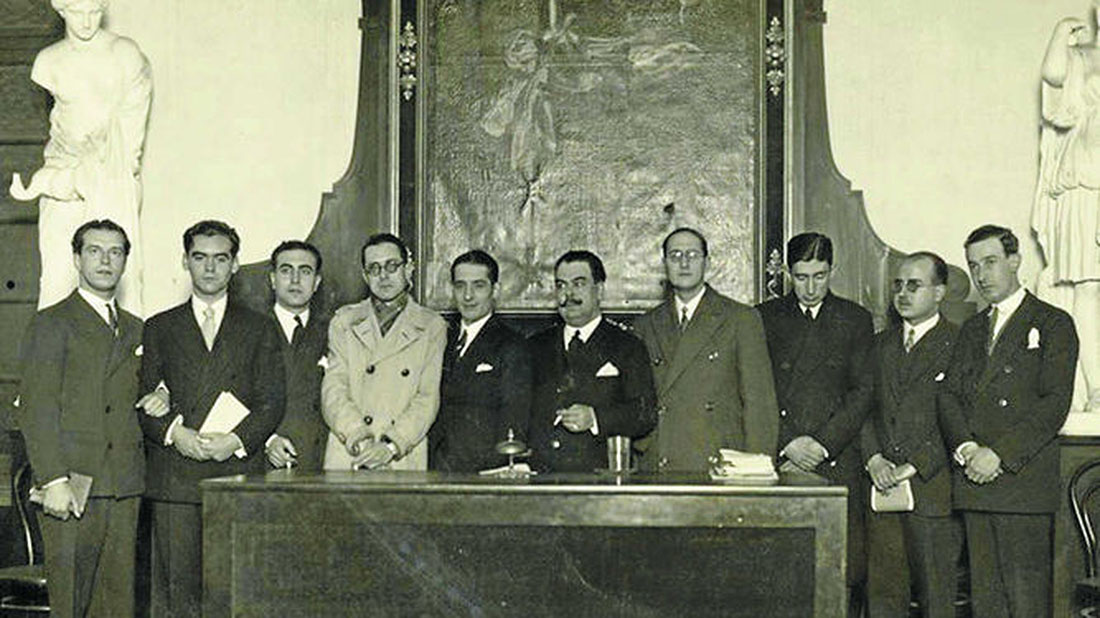
Juan Chabás founds in Denia a “regional republican newspaper of the navy”, El País, and joins the Radical Socialist Party. He continues with his historiographic works. He falls in love with the actress Carmen Ruiz Moragas and lives with her until she dies in 1936.
During the civil war he joins the Republican Left militias and is appointed captain of Infantry. In July 1936, he subscribes the manifesto of the Alliance of Antifascist Intellectuals and participates in the 2nd International Congress of Antifascist Writers a year later. He writes for magazines such as El Mono Azul. During these years he marries Simone Téry, French journalist and writer.
After the Civil War he goes into exile in France until the Nazi invasion forces him to go with his wife and parents to the Dominican Republic and later to Cuba. His wife returns to Paris. Chabás continues his journalistic work in support of the Spanish Republic. In 1943, he marries Lydia de Rivera, but the marriage does not last long. In 1947, he becomes a professor of Literature at the Central University of Caracas and the School of Journalism and marries again, this time Aída Valls, a Cuban. The military coup against Rómulo Gallegos forces him to return to Cuba where he obtains a position as university professor. He continues his journalistic work, writes essays, lectures and finishes Contemporary Spanish Literature 1898-1950 in 1952.
He has problems with the dictatorial regime in Cuba and had to remain in hiding for a while. On October 29, 1954 he suffers a heart attack and dies. Several of his works were published posthumously.
